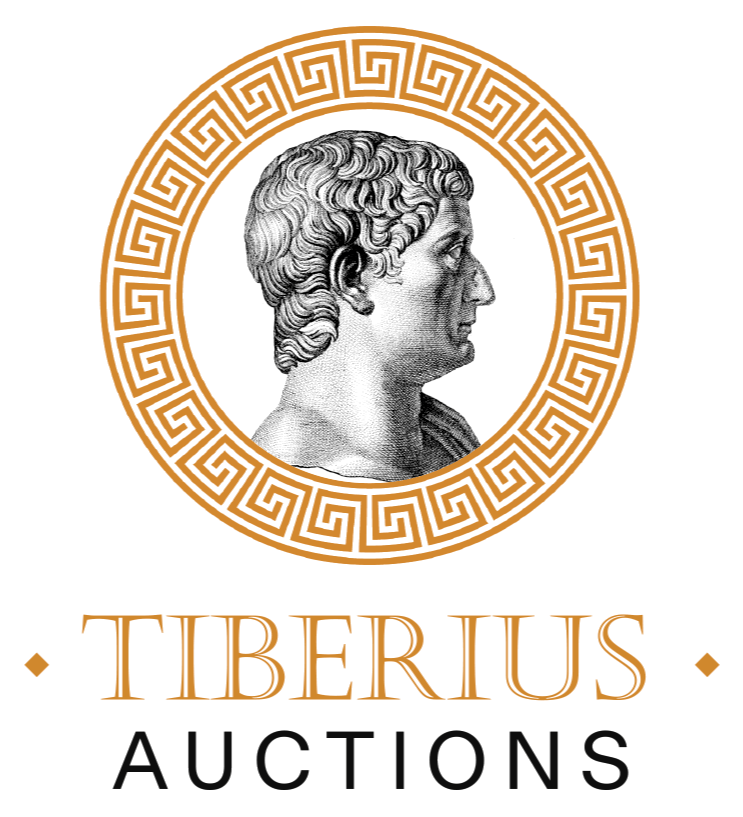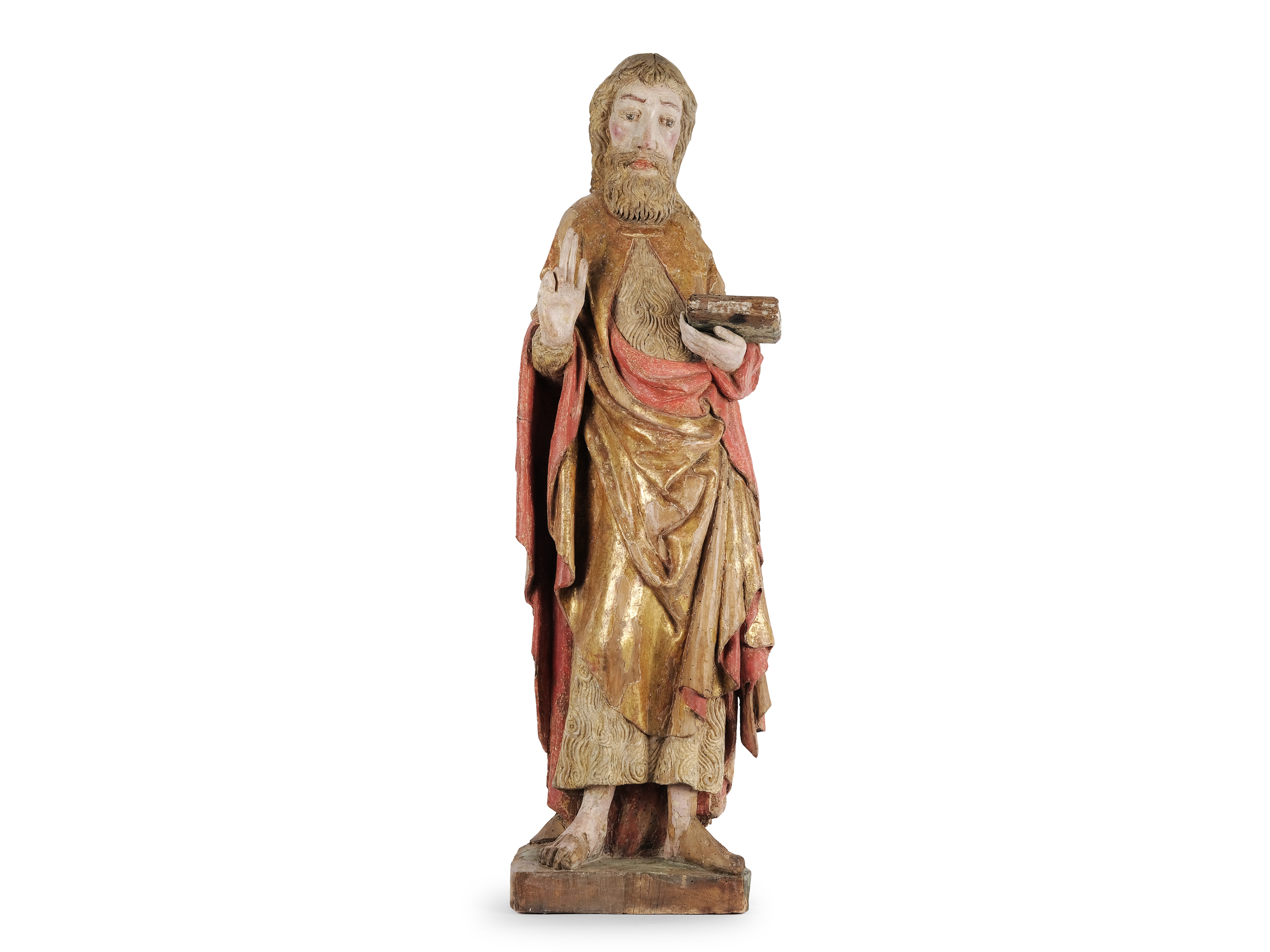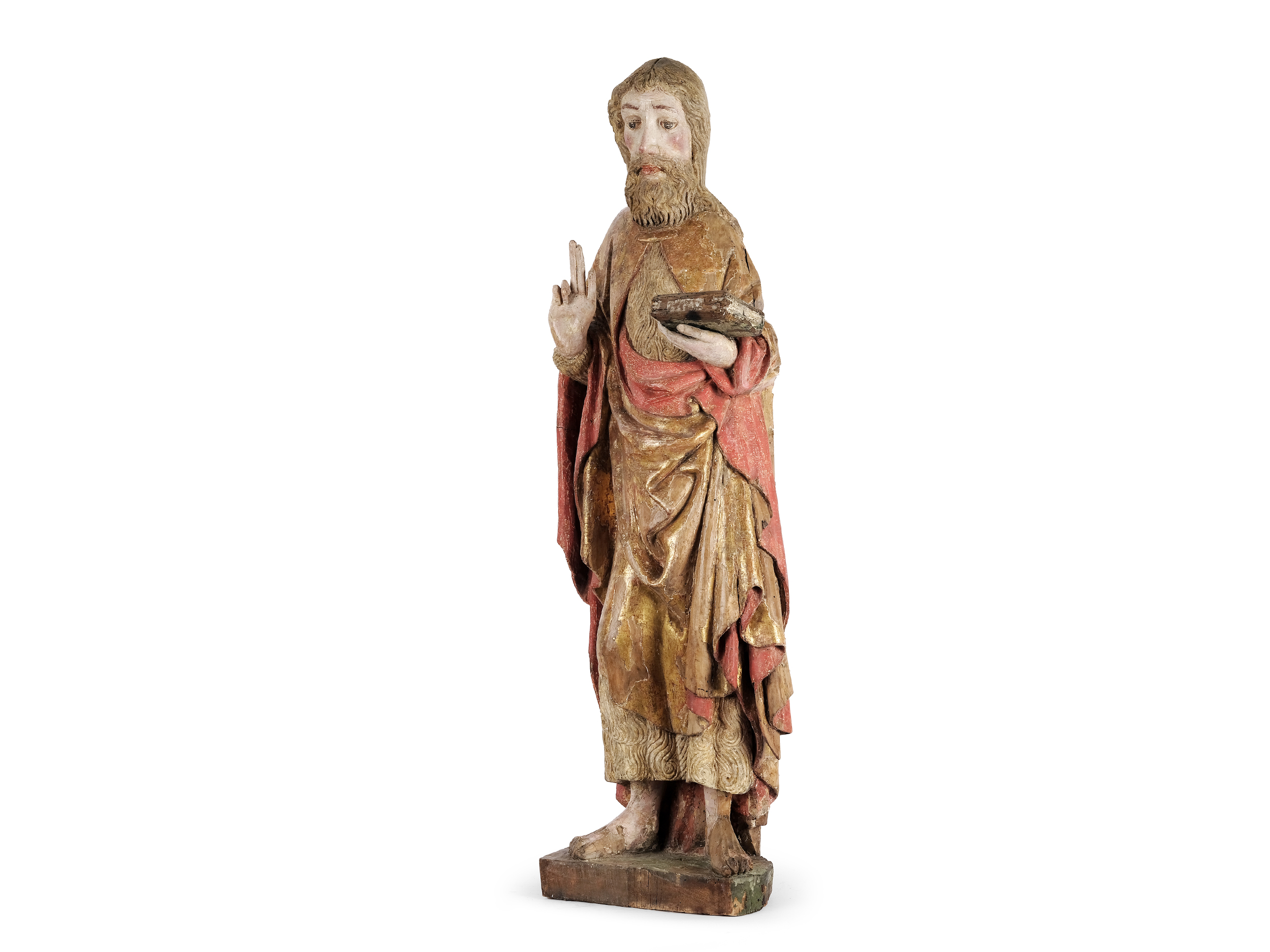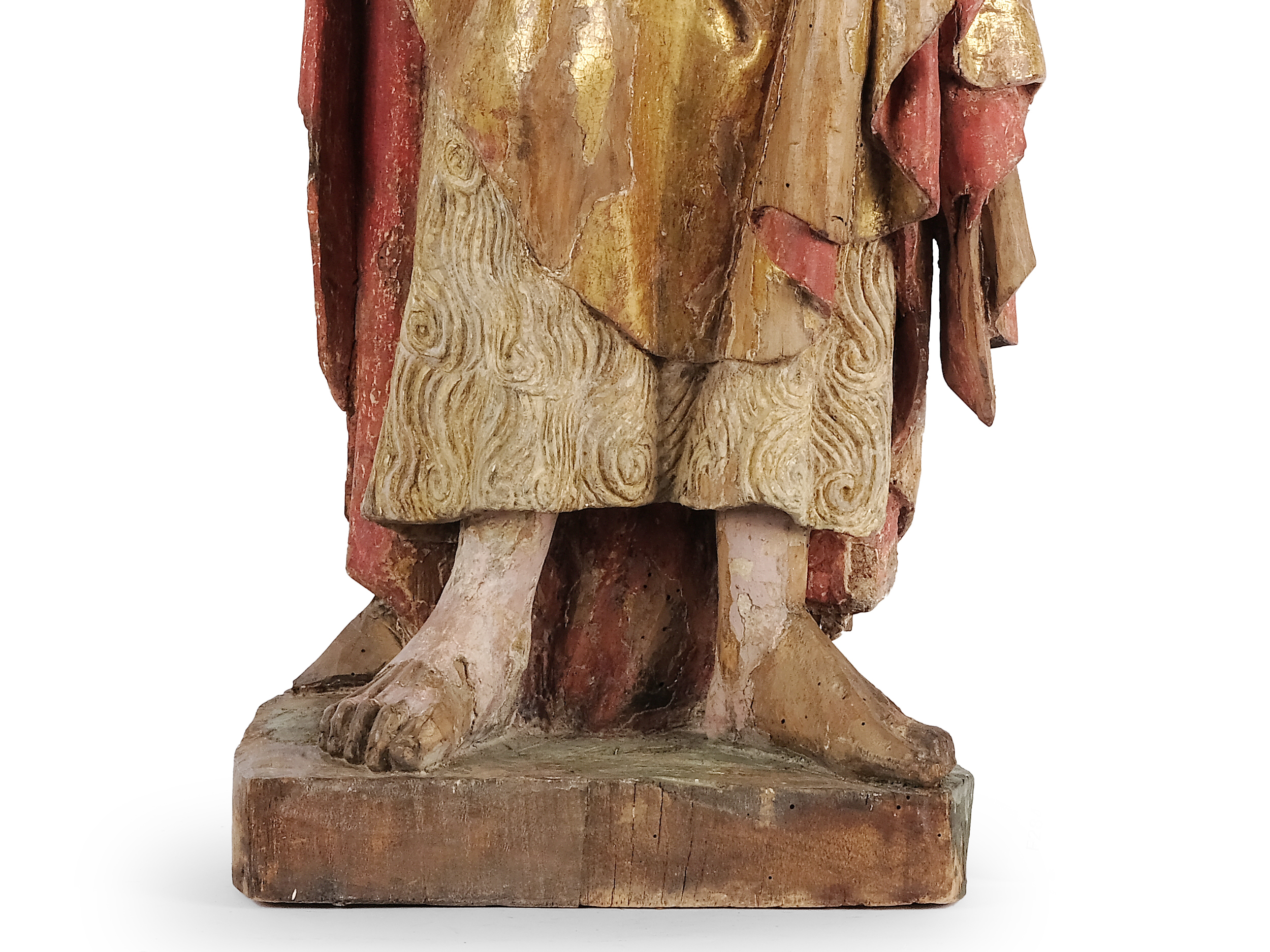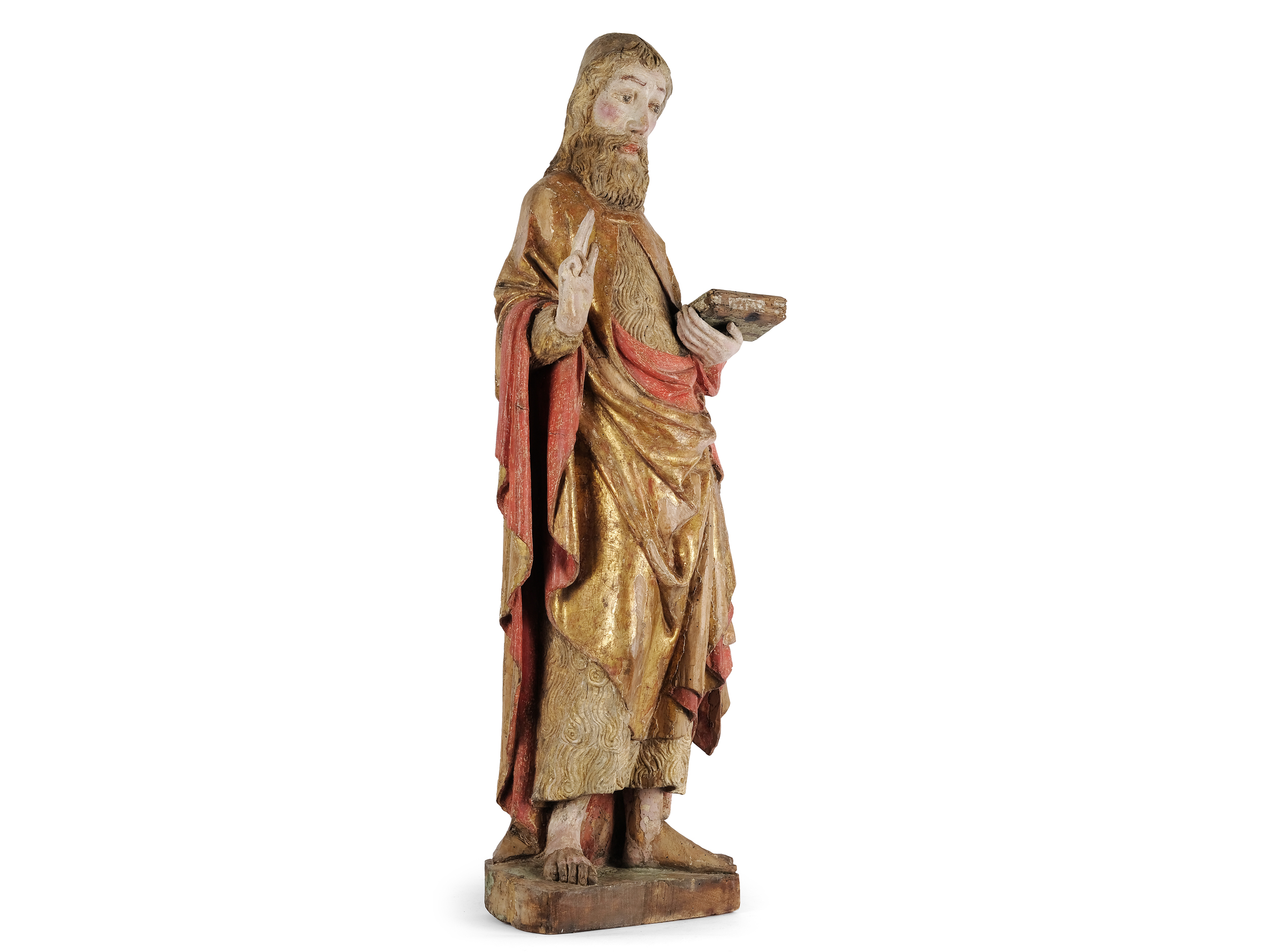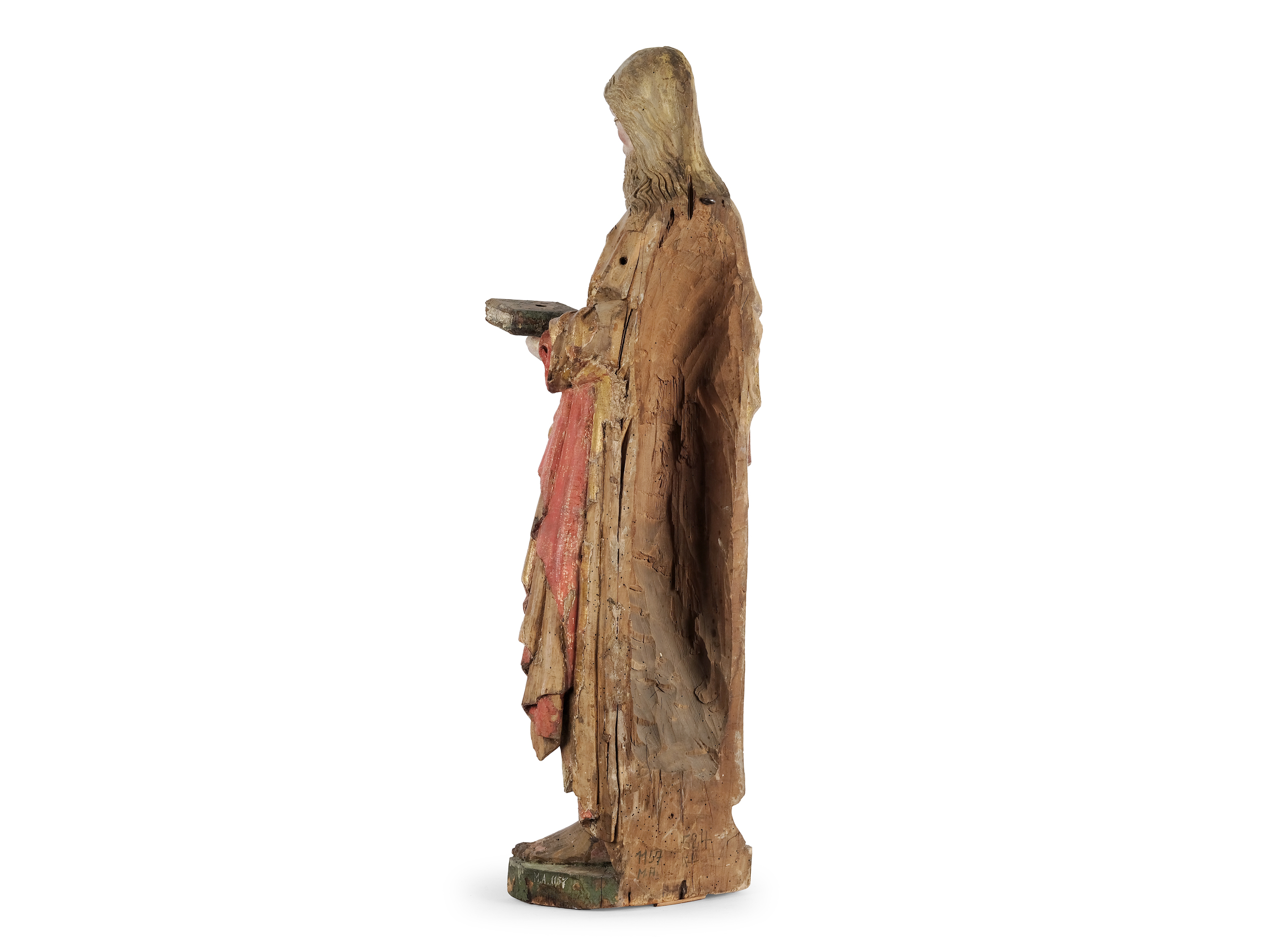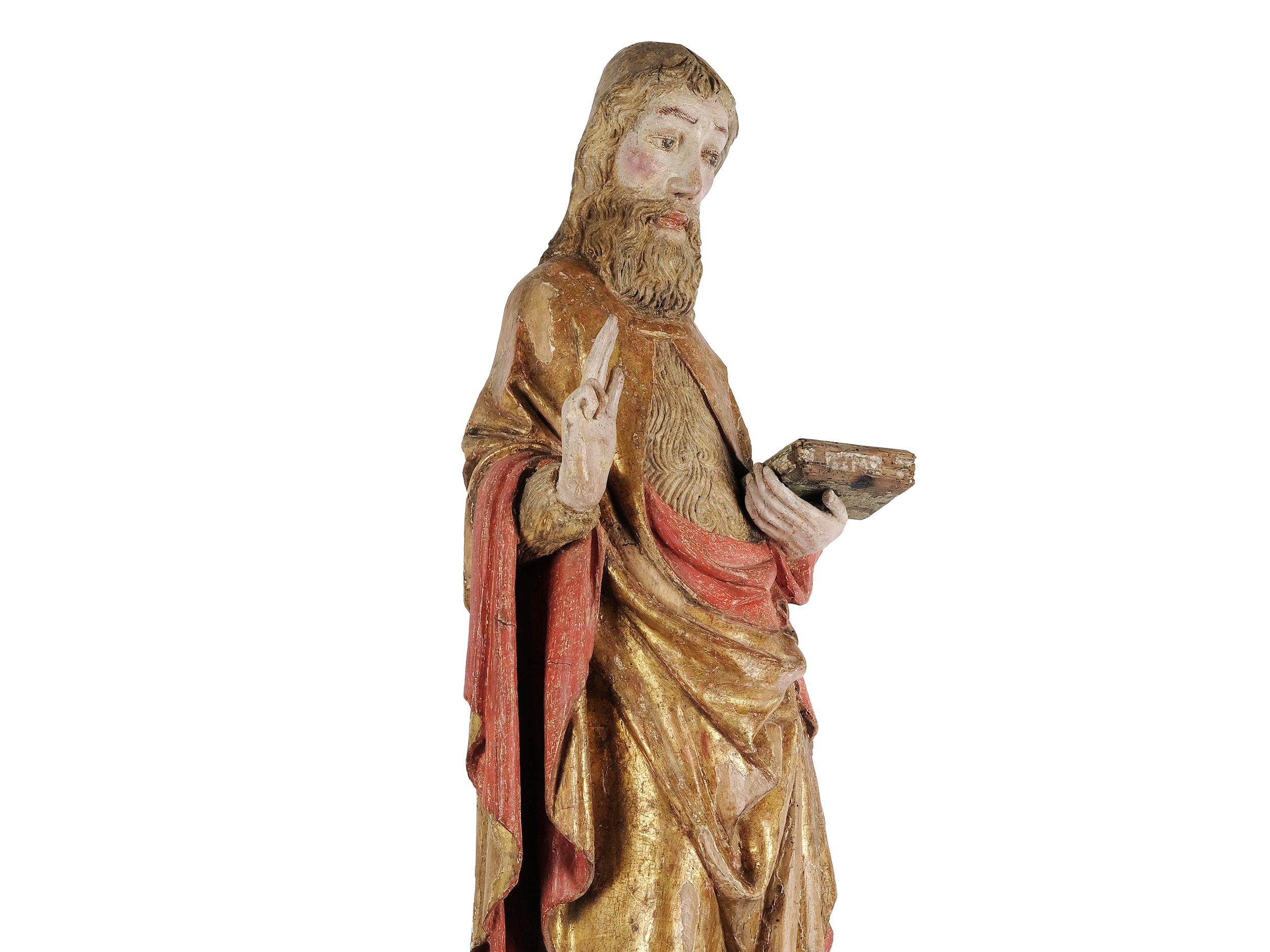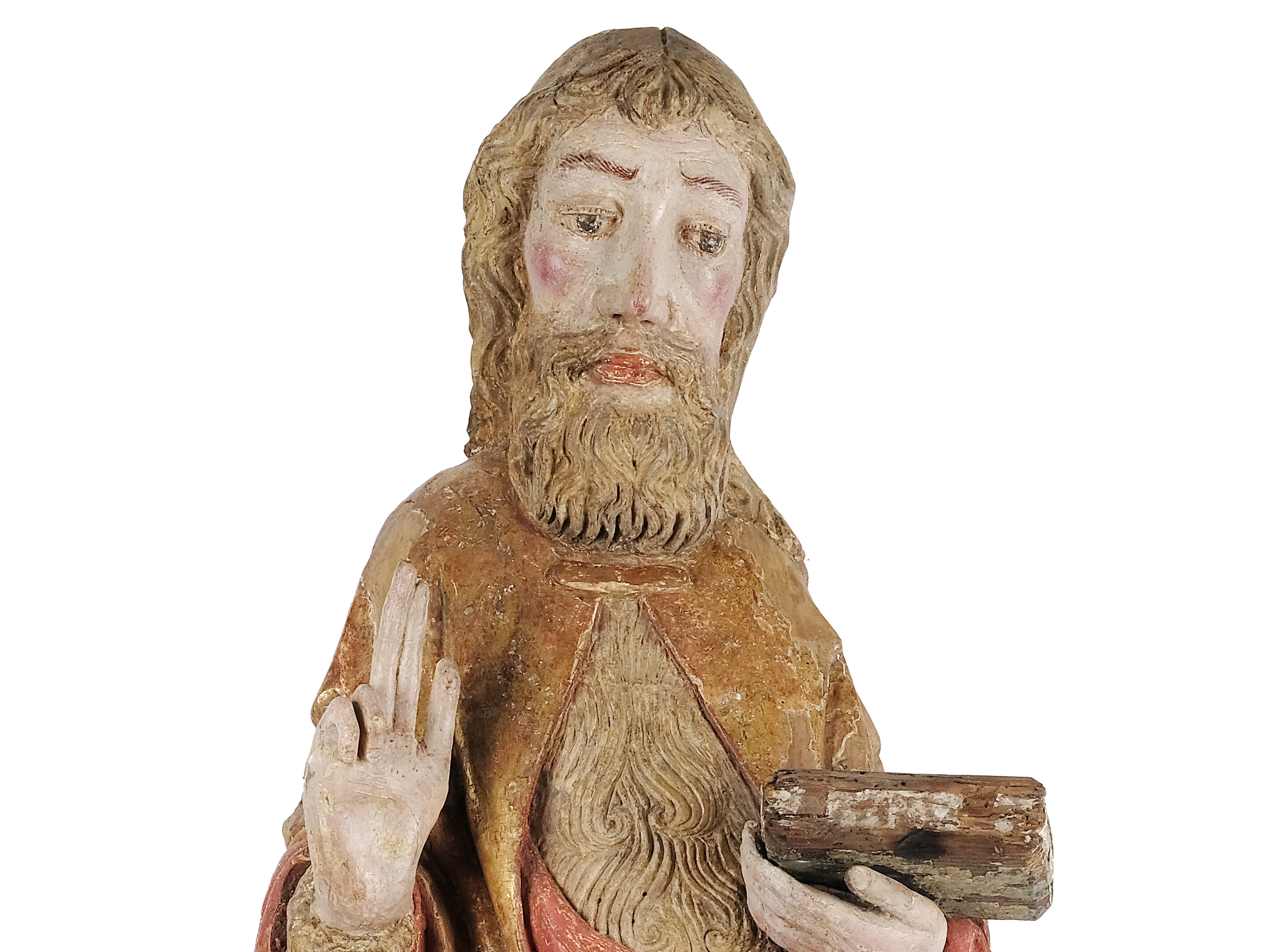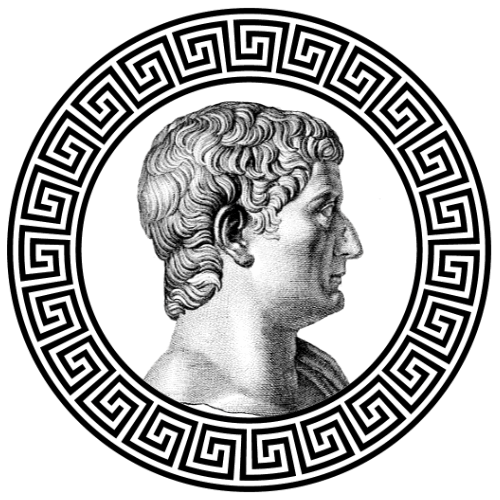Saint John the Baptist
TIBERIUS – NACHVERKAUF
Saint John the Baptist
Aftersale price:
€ 15.240
- USD: 17.907 $
- GBP: 13.376 £
Saint John the Baptist
Bohemia
Around 1410/15
Wood carved, covered with linen
Height 107 cm
Hollowed out on the back
Sculpture between asceticism and court art
This monumental wooden sculpture of St. John the Baptist was probably created shortly after 1400 in Bohemia. The sculptural detail, the vivid flesh tones, and the virtuoso treatment of hair and folds suggest the influence of the workshop of Master Theoderich—the famous artist who served as court painter under Charles IV and whose workshop is considered to have shaped the style of Prague art around 1380–1400.
Representation and iconography
John appears here as a sublime preacher of penance, equipped with his typical attributes: the camel hair robe – a symbol of his ascetic lifestyle – is carved with astonishing delicacy. His hair is curled almost symmetrically, forming a heart shape. Over this he wears a golden cloak lined with red, held together with a brooch, whose splendor forms a striking contrast to the saint’s simple way of life. The saint stands barefoot on the base plate – an emphatic grounding that refers to his desert existence. His sinewy feet with elongated toes once again point to his asceticism. In his left hand he carries a book, presumably the Holy Scriptures, as a sign of his role as a preacher. His right hand is raised in a classic gesture of proclamation: his middle and index fingers and thumb point upwards, a telling expression of his prophetic mission. The long fingers have naturalistically shaped fingernails and indentations on the palm, giving the figure an approachable impression.
Finest carving
Particularly noteworthy is the finely crafted hair and beard: thick, symmetrically falling with a striking single lock of hair on the forehead – a characteristic feature that can also be found in the depiction of St. Vitus in the Kreuzkapelle (Chapel of the Cross) in Karlstein. These parallels to the Theoderich workshop – both in the hairstyle and in the naturalistic facial design – suggest a stylistic affinity with this workshop circle. John’s facial features are modeled in an extremely lifelike manner: reddened cheeks and alert eyes with prominent, raised eyebrows lend the figure a dialogical presence. His gaze seems to be directed at a viewer standing lower down – probably an indication of the former elevated position of the statue, presumably within an altar or larger space in a church.
Folding style and flow of movement
The drapery of the golden cloak combines close-fitting modeling with the typical voluminous style of Bohemian art around 1400: close-fitting on the upper body, the fabric falls in an elegant bowl fold that opens downwards into generous, dynamic borders. A striking triangular bowl fold with multiple creases creates a lively sense of movement. The so-called “doughy” softness of the drapery refers to the transition period to the so-called soft style, which was particularly richly developed in the Bohemian context.
A work of the Prague court circle?
The stylistic similarity to works from the Theoderich workshop suggests that the figure of John may have been created by a master carver from this circle. The workshop, which worked under the patronage of Emperor Charles IV on the decoration of Prague Cathedral and Karlštejn Castle, was a place of intensive artistic collaboration between painters, sculptors, and cabinet painters. Works from this circle were not only an expression of religious piety, but also served the representational needs of the aspiring Prague court, which presented itself as the “new Rome.”
Why John the Baptist?
John the Baptist played a central role in the religious culture of Bohemia around 1400. As a preacher of penance and precursor to Christ, he was a key figure in the reform movements that were already emerging in Prague before the Hussite unrest. His admonishing message of repentance and purification appealed particularly to an urban academic audience, including Prague University as a center of theological debate. The depiction of the saint as a teaching prophet in conversation with the viewer fits perfectly into this intellectual context.
Conclusion
This sculpture of St. John the Baptist is much more than a devotional image: it combines spiritual depth with the highest artistic craftsmanship. Its stylistic connection to the Theoderich workshop gives it additional significance as a testimony to Bohemian art. The powerful presence of the saint, the virtuoso treatment of his robe, hair, and face, and his didactic aura make it a masterpiece of Bohemian sculpture at the beginning of the 15th century—created in a place where art, piety, and power were closely intertwined.
Literature
Jiří Fajt & Jan Royt, Magister Theodoricus. The court painter of Emperor Charles IV. The artistic decoration of the sacral rooms at Karlštejn Castle, Prague 1997.
Gustav E. Pazaurek, “Theoderich,” in: Allgemeine Deutsche Biographie 37, Leipzig 1894, pp. 708-710.
Additional information
| lowestimate | |
|---|---|
| highestimate |
